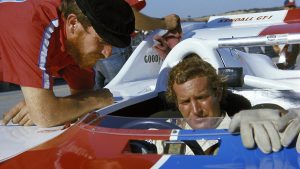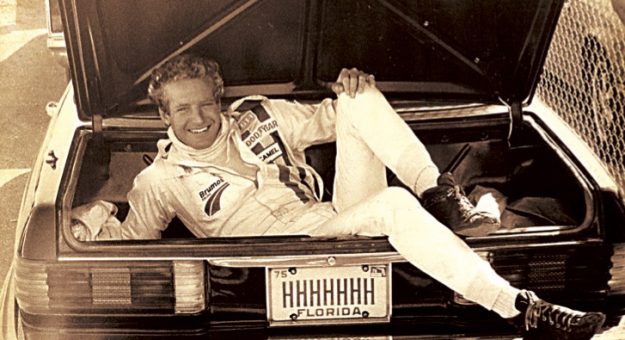The legendary career of arguably America’s greatest endurance racer began with a youngster tooling around in an old beater.
“I was born and raised in Chicago and we had a bunch of farms outside the city, west of the city. I learned how to drive a full-size car when I was 12 years old,” Hurley Haywood told SPEED SPORT. “Our farm foreman built a special seat and special pedals, and away I went.
“I drove that car on all sorts of road conditions from pavement, to gravel, to dirt, to no road at all. But I didn’t really put the equation together with racing until I actually went down to Sebring. I went with a friend; we were in high school together. We went down there and snuck in the back gate. I said, ‘This is really cool. This is what I’d like to do.’
“When I graduated from high school, I got a Corvette. I took the Corvette to college and was pretty much unbeatable at the autocrosses in Florida,” Haywood continued. “One weekend, I beat Peter Gregg. I didn’t know who Peter Gregg was at that point, but he came up, introduced himself and said, ‘You have to be pretty good to be beat me.’ That was the start of a relationship that produced a lot of championships and a lot of wins.”
An established sports car racer and the owner of Brumos Porsche in Jacksonville, Fla., Gregg recognized Haywood’s raw driving talent.

“My first real race was the 6 Hours of Watkins Glen — a world championship race.” Haywood recalled. “Peter wanted to go to that. He said, ‘We’ll get your license through NASCAR. Once you get your NASCAR license, then you can apply for an FIA license and get an upgraded B license,’ which was all I needed. That’s basically what I did.
“I really had only one, or maybe two, regional races; I didn’t even have my regional license yet. I go completely green to Watkins Glen — a world championship race — racing against the Corvettes, Camaros and Mustangs, all the GT cars; and Peter and I won the GT class in a Porsche. That was my first pro win, and soon after that I got a draft notice.
“That race was in June and I was on my way to Vietnam in November of that year — 1969. I went from the top of the hill to the bottom of hill in a couple of months. When I came home from Vietnam, I rotated out of Ft. Lee in Virginia, and Peter and I ran the first IMSA race at VIR — and won that race.”
After his discharge from the service, Haywood wanted to pursue racing as a career, so he turned to his father for financial assistance.
“To afford to go racing, I made a really slick proposal to my father and he was impressed with it. He said, ‘OK, I’ll help you support it for two years and after two years you have to be making enough money to continue along on the same scale,’” Haywood said. “I couldn’t drop down. I had to remain at the same scale or above. His thinking was, ‘He’ll never be able to do that in two years.’ But I defied logic and was able to continue on.”
With Gregg as his mentor and sometimes co-driver, Haywood enjoyed immediate success.
“Peter was the one who helped me get going and had faith in me that I could get the job done. He gave me excellent equipment to drive, backed up by a great crew,” Haywood said. “So I had all of the i’s dotted and the t’s crossed. It was a good relationship. We won back-to-back championships. He and I shared the championship in ’71 and then I won it outright in ’72. In ’73, we went into the Cam-Am Series with the Porsche 917. That was a huge jump, but it was a successful one.”
Click below to continue reading.
